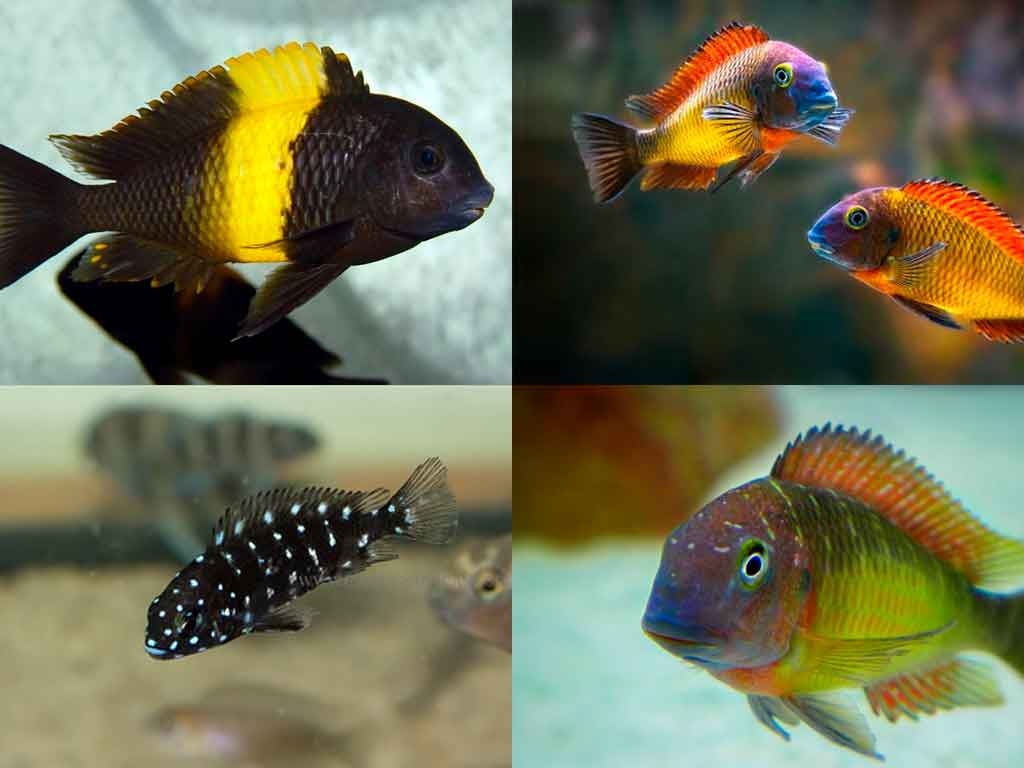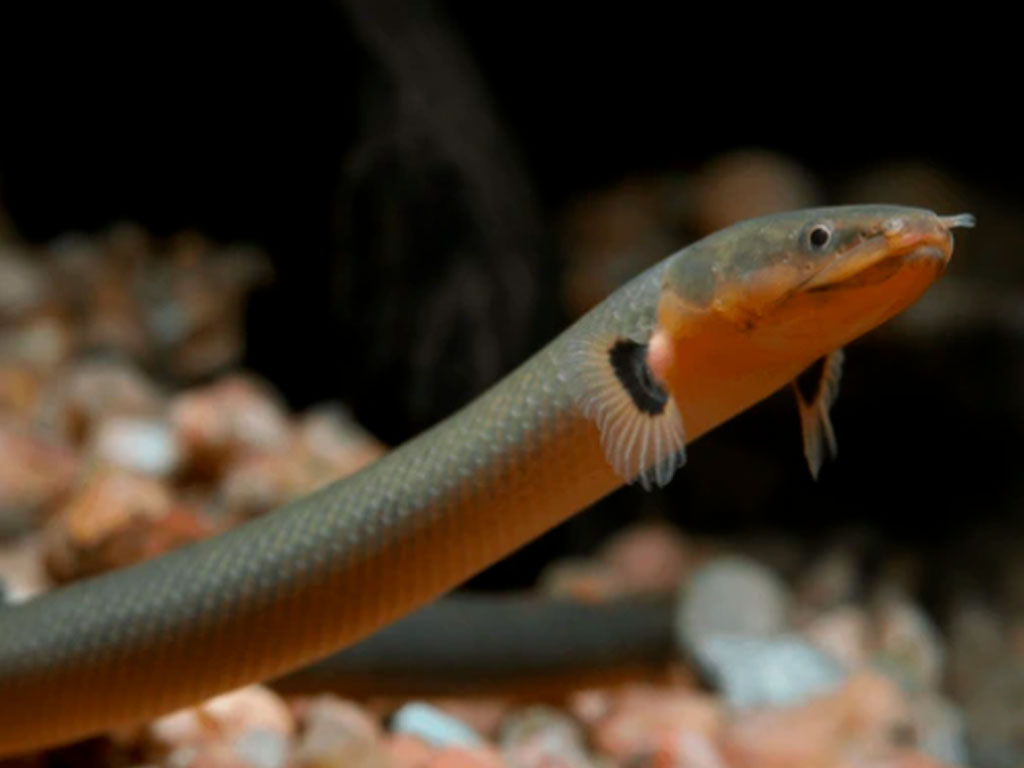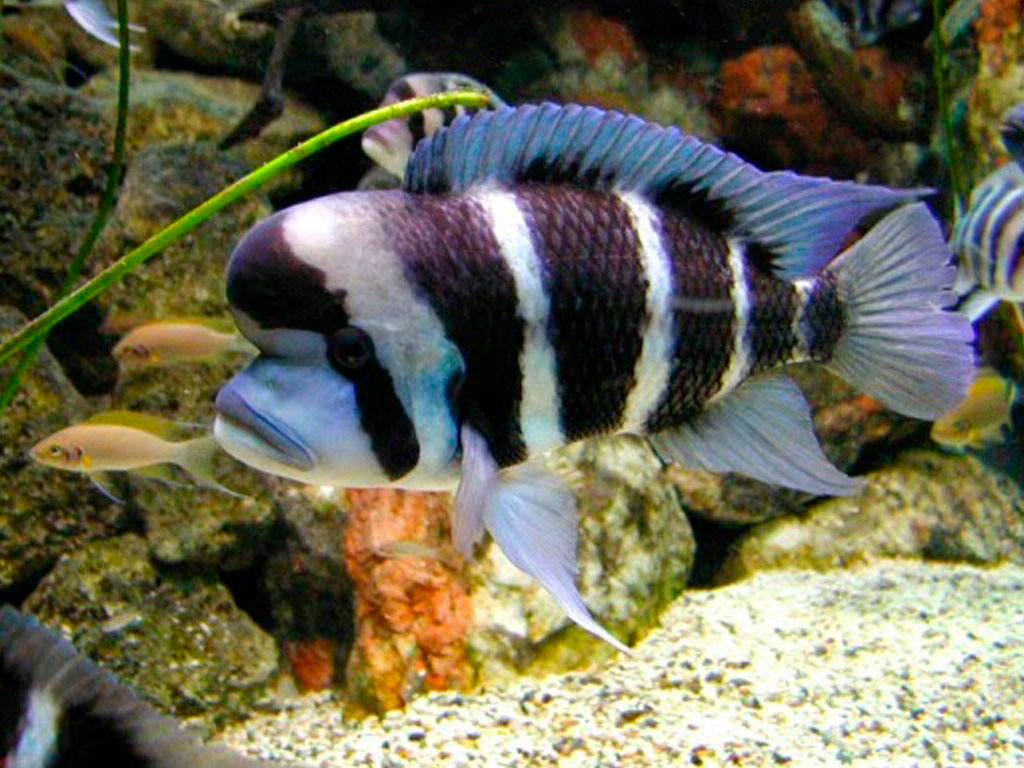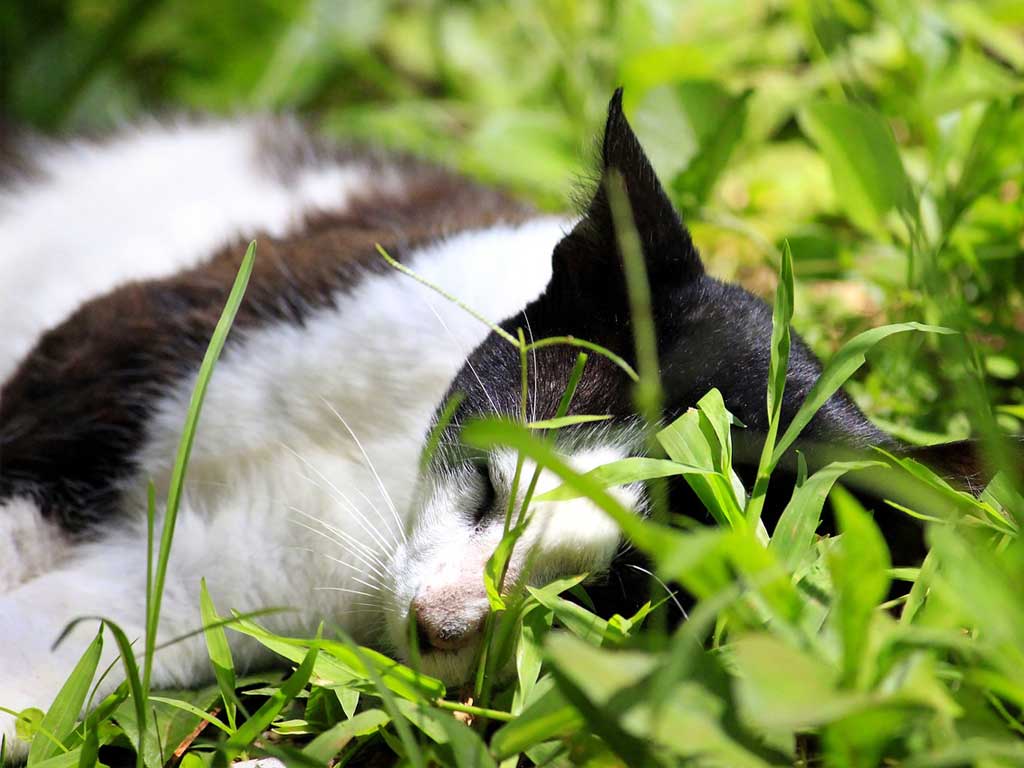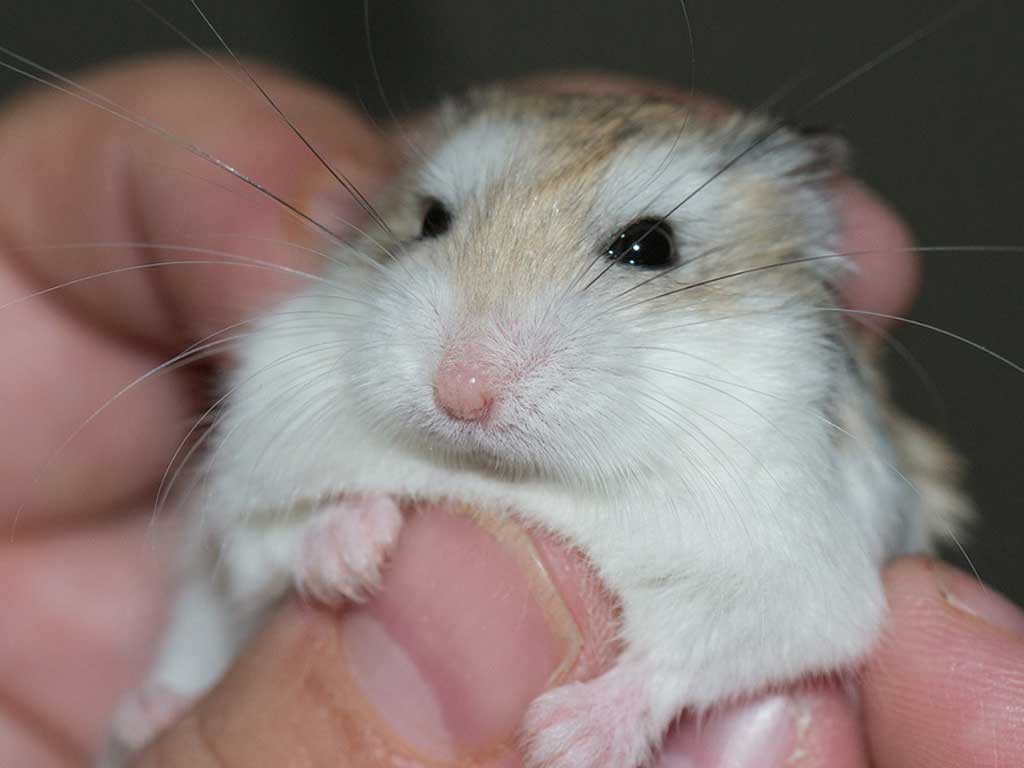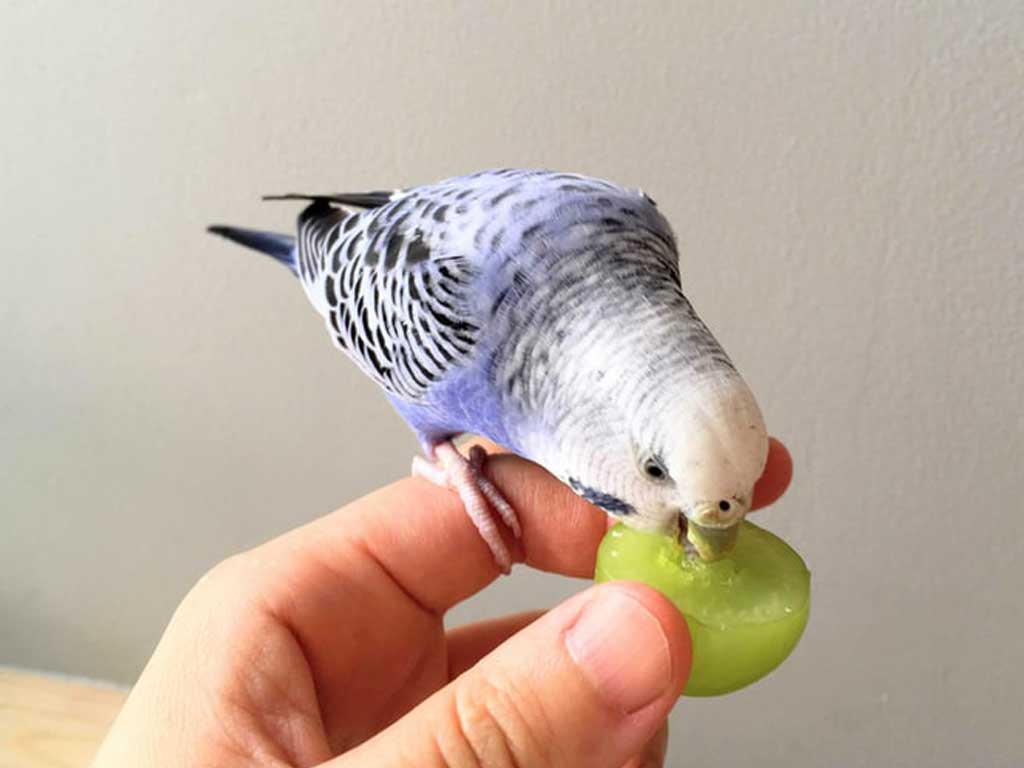Few fish evoke as much passion and dedication in the world of aquaristics as Tropheus cichlids. Hailing from the majestic Lake Tanganyika in Africa, these fish are a whirlwind of color, activity, and personality. Witnessing a large colony of Tropheus, with their complex social interactions and vibrant coloring, is one of the most rewarding experiences a hobbyist can have. However, behind that beauty lies one of the hobby’s greatest challenges.
These are not fish for beginners or for a standard community aquarium. Tropheus demand a total commitment to their unique needs: a strictly herbivorous diet, a large-sized aquarium, and meticulous social management to control their famous intraspecific aggression. Are you ready to take on the challenge? In this complete and honest guide, we will break down everything you need to know to succeed with the undisputed king of Tanganyikan cichlids, from tank setup to the secrets of their diet and behavior.
The Tropheus Challenge: Are These Cichlids for You?
Before falling in love with their colors, it is crucial to understand the nature of these fish. Tropheus are the definition of a gregarious yet contentious cichlid. They live in large colonies with a very strict dominance hierarchy. This social structure makes them incredibly active and interesting to watch, but it also generates constant aggression among themselves (intraspecific aggression).
A dominant male will claim leadership, and there will be continuous challenges from other males. Fights are common and, in a poorly configured aquarium or with a group that is too small, can end in the death of the weakest individuals. Therefore, if you are looking for a peaceful fish or have a tank smaller than 80-100 gallons, Tropheus is not the right choice.
Getting to Know the Tropheus Genus: Popular Species and Varieties
The Tropheus genus is famous for its incredible diversity of colors, which varies by geographic location in the lake. Although the taxonomy is complex, these are the most well-known varieties:
Tropheus duboisi: The “Polka-Dot” Transformation
This is perhaps the most famous for its spectacular color change. Juveniles are a deep black dotted with bright white or bluish spots, like a starry sky. As they mature, the spots fade, the body turns solid black or dark blue, and they develop a striking vertical band, which can be white or yellow, just behind the head.
Tropheus moorii: A Rainbow of Locations
This is not a single fish, but a complex of dozens of geographic variants, each with a unique color pattern. They offer the greatest explosion of color in the adult stage. Some of the most coveted varieties include:
- Tropheus “Bemba”: Dark body with a wide, intense orange vertical band.
- Tropheus “Icola”: Famous for its striking bright yellow vertical band on a black body.
- Tropheus “Moliro”: Exhibits a spectacular, deep red color over much of its body.
The Tropheus Aquarium: Recreating a Corner of Tanganyika
Success with Tropheus begins with creating a habitat that meets their needs for space and water chemistry.
Size and Dimensions: Space is Non-Negotiable
Due to their adult size (4.5-6.5 inches or 12-16 cm), high activity, and aggression, space is the most critical factor. An aquarium of at least 80-100 gallons (300-400 liters) with considerable length (at least 4-5 feet or 120-150 cm) is required to house a stable group.
Water Parameters: The Chemistry of the Great Lake
Lake Tanganyika has very hard and alkaline water. Replicating these parameters is vital.
| Parameter | Ideal Range | Notes |
| Temperature | 24°C – 27°C (75°F – 81°F) | Stability is key. |
| pH | 8.0 – 9.0 | A high pH is fundamental to their health. |
| General Hardness (GH) | 10 – 20 dGH | They need hard water. |
| Carbonate Hardness (KH) | 15 – 25 dKH | A high KH will keep the pH stable. |
| Ammonia/Nitrite/Nitrate | 0 ppm / 0 ppm / < 20 ppm | They require excellent water quality. |
Decor and Substrate: A Landscape of Rock and Sand
- Substrate: Use fine sand, such as silica sand. It is important for their natural digging behavior, especially during reproduction.
- Rocks: Create rock formations that offer visual barriers and some shelter, but avoid creating too many small, defensible caves, as this can intensify territorial disputes.
- Plants: Tropheus are voracious herbivores. Most plants will be eaten. Only the toughest, bitter-tasting species like Anubias or Java Fern, tied securely to rocks, have a chance of survival.
The Key to Success: A Strictly Herbivorous Diet
This is the second fundamental pillar. In nature, Tropheus spend their day scraping algae (“aufwuchs”) from rocks. Their long digestive tract is designed to process plant matter. An incorrect diet, high in animal protein, is the main cause of death in captivity, leading to the dreaded “bloat.”
- Recommended Foods: The diet must be based on high-quality flakes and pellets specifically formulated for herbivorous cichlids, with a high content of spirulina.
- Foods to Avoid: Protein-rich flakes, bloodworms, adult brine shrimp, or any food intended for carnivorous or omnivorous fish.
- Promote Algae: Using intense lighting to promote the growth of green algae on the aquarium rocks will provide them with a natural food source and constant grazing behavior.
Social Management: The Art of Assembling a Stable Group
Controlling aggression is an art. The strategy is based on diluting it.
- Group Size: Keep a large group, with 12 to 15 individuals minimum. A small group allows the dominant male to focus his aggression on a few individuals until they are killed.
- Sex Ratio: The ideal ratio is one male for every 3-4 females. This distributes the male’s harassment during courtship.
- Sexing Tropheus: Visually, it is almost impossible to distinguish males from females. The only reliable way on sub-adult fish is “venting”: catching the fish and observing its ventral area. The female has a larger, rounder ovipositor (egg-laying tube) than the male.
Reproduction: The Fascinating Art of Mouthbrooding
They are maternal mouthbrooders. The ritual is fascinating: the pair will clean an area in the sand, the female will lay an egg, turn around to scoop it into her mouth, and at that moment the male will release his sperm to fertilize it inside the female’s mouth.
The female will incubate the eggs in her mouth for about 3-4 weeks, without eating. Broods are small, typically between 7 and 20 fry, who are born as miniature replicas of their parents and are self-sufficient.
Tropheus cichlids are a dedicated project. They represent a challenge that tests the aquarist’s knowledge and dedication. However, for those willing to provide a large aquarium, a strictly herbivorous diet, and careful social management, the rewards are incomparable. Having an aquarium filled with the energy, color, and complex dynamics of a Tropheus colony is, for many, the pinnacle of freshwater aquaristics.
FAQs
Can I keep a small group of 3 or 4 Tropheus?
No. This is a recipe for disaster. Such a small group does not allow for the dilution of natural aggression, and the dominant fish will very likely harass and kill the others. A minimum of 12-15 individuals is necessary.
What happens if I feed them normal tropical fish food?
It is extremely dangerous. A diet high in animal protein can cause “bloat,” an intestinal swelling that is often fatal. They must eat only high-quality vegetable-based foods (spirulina).
Why are they so aggressive with each other but not other fish?
Their aggression is primarily intraspecific, meaning towards their own species, to establish and maintain a social hierarchy. It is not recommended to mix them with other fish due to their highly specific diet and water requirements.
How can I tell if I have males or females?
Visually, it is almost impossible. The only reliable method is “venting,” which involves examining the fish’s ventral openings. This requires experience to do correctly and is only visible on fish of a certain size.
Is the Tropheus a good fish for a community tank?
Definitely not. Their requirements for a large tank, very hard and alkaline water, a strictly herbivorous diet, and their intraspecific aggression make them completely unsuitable for a standard community aquarium.

